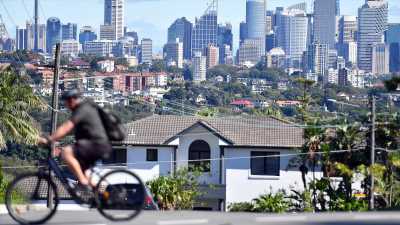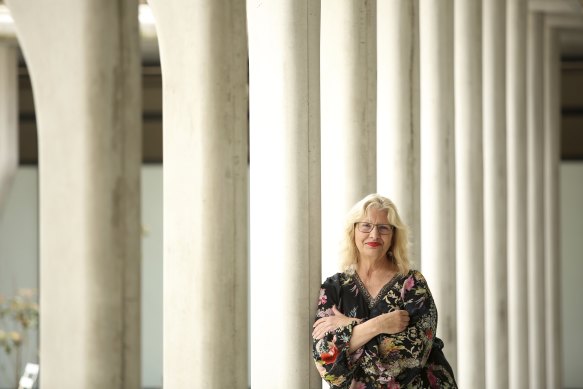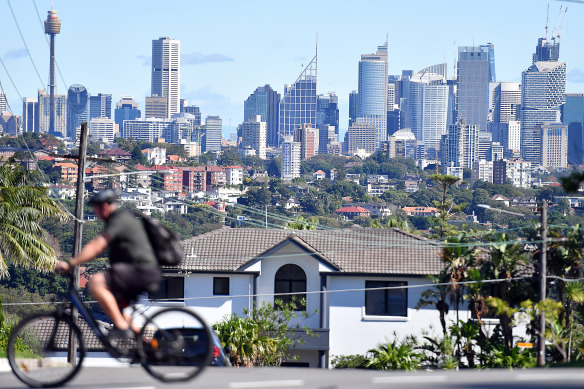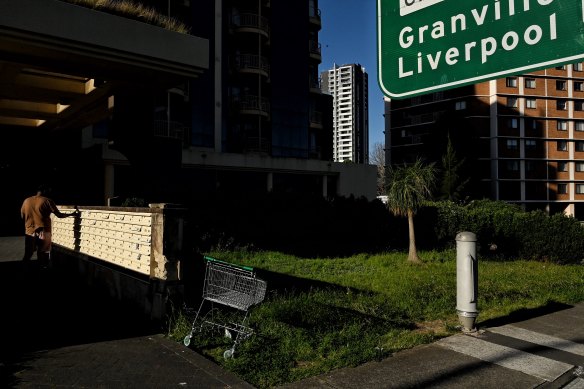Save articles for later
Add articles to your saved list and come back to them any time.
Labor and Liberal mayors in Sydney’s richest suburbs are resisting calls for more new homes in established areas, accusing successive state governments of not building enough schools, hospitals or public housing to meet the city’s growing population.
NSW Productivity Commissioner Peter Achterstraat last week urged the new state government to consider greater building heights and denser development in Sydney’s most affluent suburbs to increase a stagnant housing supply chain. Developer lobby groups backed the push for an overhaul of housing targets and density.
It came after Premier Chris Minns warned against urban sprawl and said at The Sydney Morning Herald’s Sydney 2050 summit last month that building up and not out was the key to creating a vibrant, young metropolis.
However, the mayors of some of the city’s affluent enclaves say their council areas are already congested, have denser populations than western Sydney and lack the infrastructure to cope with even modest population increases.
Mosman Council has a target of just 300 new homes between 2021-26, but Mayor Carolyn Corrigan said the north shore council’s capacity is limited by its size, geography, infrastructure, lack of surplus or affordable land and existing density.
“Mosman has been subject to long term significant traffic congestion with the Spit and Military Road corridor the seventh busiest thoroughfare in the state and congestion is only expected to worsen with the delay of the Beaches Link,” she said.
Waverley Labor Mayor Paula Masselos said her council, which includes Bondi Junction, Bronte and Bondi Beach, had a population density more than three times greater than the rest of Sydney.
Waverley Mayor Paula Masselos said building taller towers into already densely populated areas such as Sydney’s eastern suburbs will not solve the housing affordability crisis.Credit: James Alcock
“Squeezing taller towers into already densely populated areas and expecting singles and young families to fork out $2 million plus to live in a small apartment with limited access to open green space won’t solve the housing shortage or housing affordability crisis,” she said.
Woollahra Liberal Mayor Susan Wynne said roads in the eastern suburbs were choked “and some people are already finding it difficult to get to and from their homes, schools and workplaces in a timely manner”.
Wynne said planning powers had already been stripped from local councils.
“It would be great to see the new state government engaging more with local communities on what types of development would be the best fit for each area, rather than relying on developers to set the agenda,” she said.
Hunters Hill Liberal Mayor Zac Miles said it was state government, not local councils, that should be blamed for obstructing the construction of new homes.
The mayors of Sydney’s richest postcodes say their council areas are congested and have denser populations than western Sydney.Credit: Sam Mooy
“The barriers that the state government constantly put in place of new homes being built is ridiculous and it hurts builders and homebuyers,” he said.
Inner West Council Labor Mayor Darcy Byrne blamed successive state and federal governments for their failure to build new public housing, which he said was causing inner-city Sydney to lose its social diversity.
“The state government’s development assessment system, which councillors are legally removed from, is clunky and slow,” he said.
North Sydney Mayor Zoe Baker said more than 2000 new apartments had been built along the Pacific Highway in North Sydney without any impact on housing affordability: “The opposite, in fact, as housing numbers and prices in that corridor are at an all-time high.”
Baker said the North Sydney council area had lost more than 2000 affordable beds over the last two decades, while the council had delivered 133 affordable dwellings.
“The state government ought to move to immediately include a minimum of 30 per cent affordable housing provision as part of any rezoning to provide greater height and density,” she said.
Planning Minister Paul Scully on Friday called the number of new homes built across Sydney “incredibly unbalanced” and said the Minns government recognised western Sydney cannot continue to bear the brunt of our expanding population alone.
Speaking at the Greater Parramatta and Olympic Peninsula conference, Scully also said western Sydney had 10 times the number of dwelling completions as Sydney’s northern suburbs.
“This comes at a time when all of Greater Sydney has to start pulling its weight on housing supply, so we can build more homes, closer to jobs and services, and give everyone an opportunity to afford a home,” he said.
Committee for Sydney chief executive Eamon Waterford said Sydney’s west and southwest had taken a “disproportionate amount of housing” compared to harbour and beach suburbs.Credit: Nick Moir
Scully also told the conference at Sydney Olympic Park that the government would spend $700 million each year on new roads, schools, hospitals and open spaces, and provide $1 billion over the next decade for councils to build new parks and sporting facilities.
Liberal planning spokesman Scott Farlow echoed the views of Labor and Liberal mayors who said Sydney’s harbour and beach suburbs are among the most densely populated areas of the city.
“Unlike the government, we’re not interested in stirring up east-west warfare and pitting Sydneysiders against each other,” he said.
The Sun-Herald last year reported that two-thirds of Sydney’s councils were projected to miss targets for the construction of new homes over the next five years.
Committee for Sydney chief executive Eamon Waterford said Sydney’s housing crisis would not be solved by pitting one part of the city against another, but by looking at areas that can absorb more housing such as close to public transport.
But he said: “Sydney’s west and southwest have taken a disproportionate amount of housing and there’s a lot of development fatigue and frustration in the region – and the reality is, there’s plenty of untapped capacity in the north and east.”
The Morning Edition newsletter is our guide to the day’s most important and interesting stories, analysis and insights. Sign up here.
Most Viewed in National
From our partners
Source: Read Full Article




